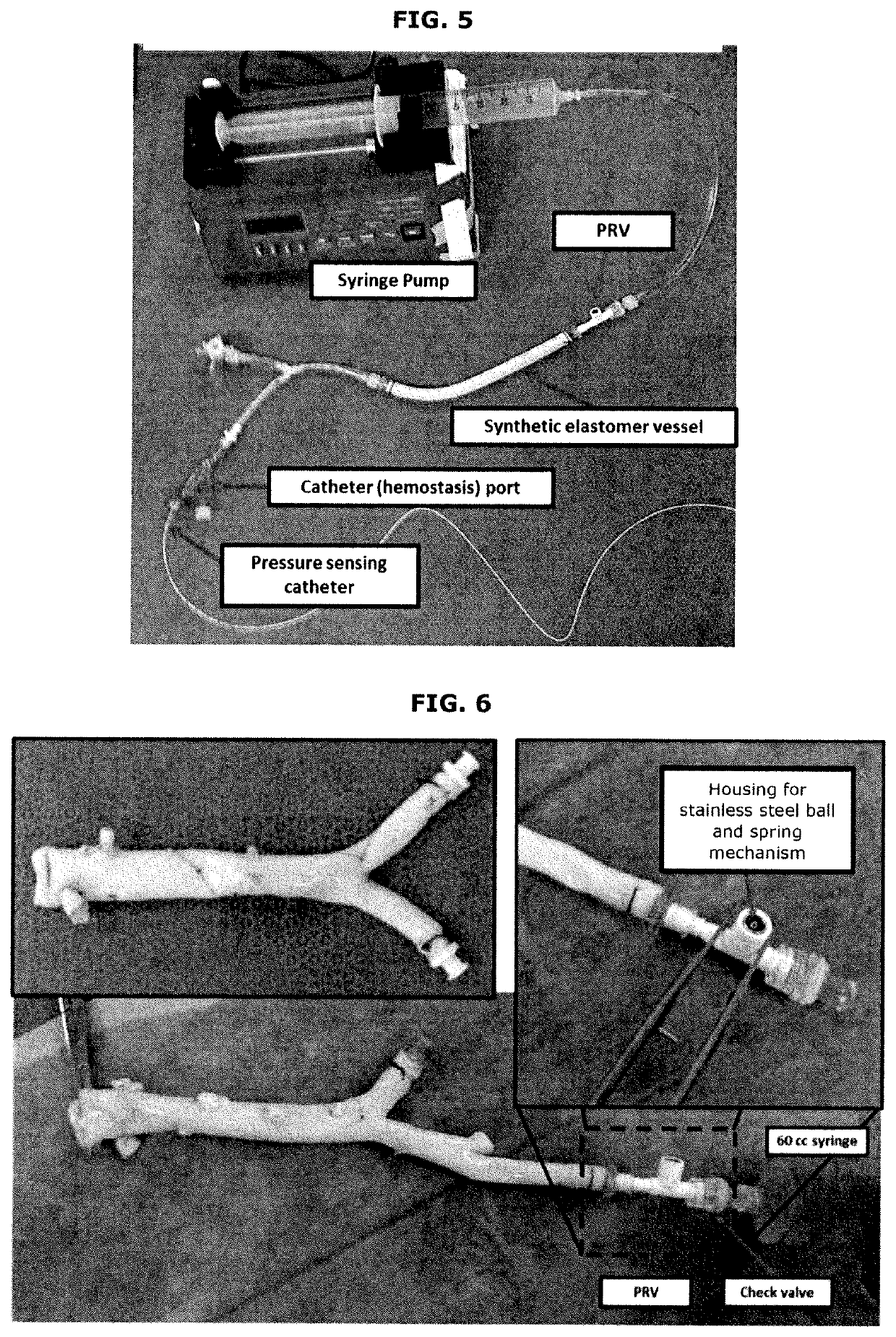Aortoiliac implant and processing and uses thereof
a technology of aortoiliac arteries and aortoiliac arteries, which is applied in the field of aortoiliac arteries (ai) grafts and processing, can solve the problems of limb loss, unfavorable surgical outcome, and high risk of mortality and morbidity
- Summary
- Abstract
- Description
- Claims
- Application Information
AI Technical Summary
Benefits of technology
Problems solved by technology
Method used
Image
Examples
example 1
Measurements of Aortoiliac Artery Grafts
[0052]The flaccid inner diameters (ID) and distended outer diameters (OD) of 16 clinical aortoiliac artery (AI) grafts (Table 1) and 49 developmental aortoiliac artery (AI) grafts (Table 2) were determined. The AI grafts were prepared for measurement by cleaning of adipose tissue. All arteries were ligated with prolene. The aorta was clamped. A cannula was ligated to one of the iliac arteries. A calibrated Medtronic 125 mm Hg syringe was filled with isotonic saline and the graft inflated for the OD measurement, which was taken with a ruler. The distended OD was obtained using the calibrated Medtronic 125 mm Hg syringe and inflating to a target pressure of 125 mm Hg. The ligations were removed and the flaccid ID was obtained using Hegar dilators. The mean and standard (std) are of the percent change column.
TABLE 1Clinical GraftsCodeFlaccid ID (mm)Dist OD (mm)%MeanStdDAI1016101638%DAI1016101638%AI1017101741%AI1020102050%42%6%DAI1115111527%DAI111...
example 2
l Embodiments
[0053]Additional embodiments according to the present invention are shown in FIGS. 1-8.
[0054]Some definitions are set forth below:
[0055]1. BacT / Alert (BTA) bottles: Bottles used to collect and incubate microbial (Aerobic and Anaerobic) samples for testing in the Bac-T-Alert system.
[0056]2. Cold pack: Frozen block / ice substitute used to maintain the dissection solution temperature within a range of 1-10° C. during the processing procedure.
[0057]3. Microbiological Samples: Refers to the Processing Representative sample (PRS) and Representative Sample (RS).
[0058]4. Processing Filter (PF): A 0.2 micron filter used to filter the last rinse solution. The filter is plated and used for microbial testing.
[0059]5. Processing Representative Sample (PRS): A 1 cm×1 cm sample piece of tissue co-processed with the tissue intended for transplant. It is considered “processing” as it is never exposed to disinfection solution.
[0060]6. Representative Sample (RS): A 1 cm×1 cm sample piece o...
example 3
rization Processing of Arteries
[0076]The main goal of this study was to further optimize arterial decellularization process to produce more robust decellularization while maintaining matrix integrity of arteria grafts. One objective was to reduce the preservation step's glycerol concentration from 77% glycerol and assess the degree to which various reduced glycerol concentrations (15%, 30%, 45%, 60%) protect the matrix from either compaction or damage during processing, freezing, and gamma irradiation.
[0077]An investigation of various glycerol concentrations was performed because higher concentrations increase intraluminal pressure generation (and therefore require limiting flow rate to avoid damage from over pressurization), but lower concentrations contain too much water, which could result in freezing artifacts and / or free radical-induced damage from irradiation. Consequently, the study intended to identify a glycerol concentration that provided a balance between increasing flow ...
PUM
 Login to View More
Login to View More Abstract
Description
Claims
Application Information
 Login to View More
Login to View More - R&D
- Intellectual Property
- Life Sciences
- Materials
- Tech Scout
- Unparalleled Data Quality
- Higher Quality Content
- 60% Fewer Hallucinations
Browse by: Latest US Patents, China's latest patents, Technical Efficacy Thesaurus, Application Domain, Technology Topic, Popular Technical Reports.
© 2025 PatSnap. All rights reserved.Legal|Privacy policy|Modern Slavery Act Transparency Statement|Sitemap|About US| Contact US: help@patsnap.com



